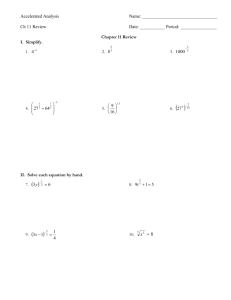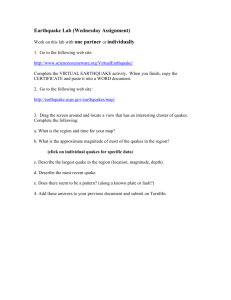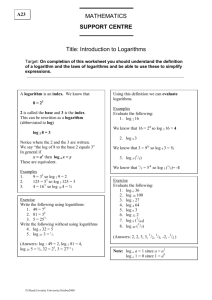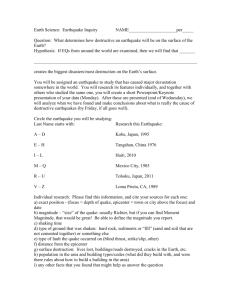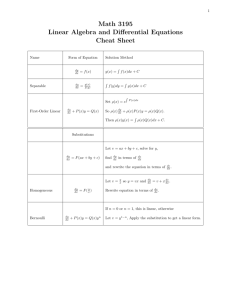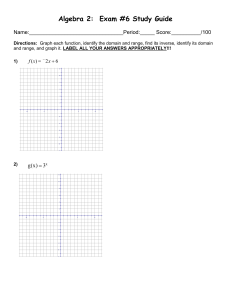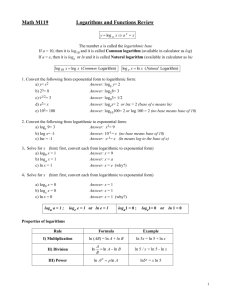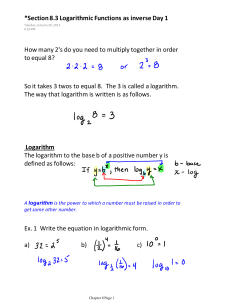Solving Log Equaitons
advertisement
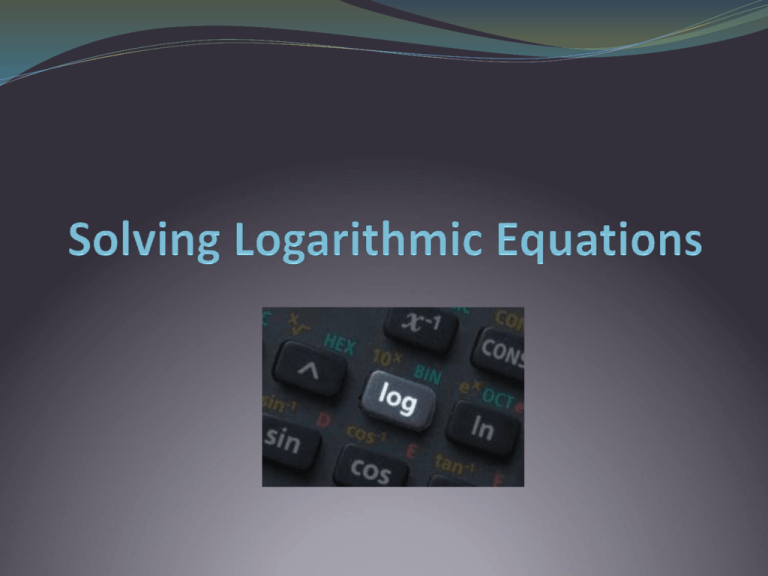
Definition of Logarithms We recall from the last lesson that a logarithm is defined as y = logbx if and only if By = x. So… And… 3 = log7 x 73 = x 62 = x 2 = log6 x 2 = logx 25 x2 = 25 x3 = 8 3 = logx 8 y = log4 16 4y = 16 8y = 64 y = log8 64 We will use this definition to solve equations involving logarithmic functions. Rewriting Logarithms You can use the log properties to solve equations when the variable is contained in a logarithm. Use the logarithm properties to rewrite as one log. 2. Rewrite the log into exponential form. 3. Solve 1. • • • • 5th Raise 2 to the power Distribute Add 4 to both sides Divide by the coefficient log 2 x 1 log 2 4 5 log 2 4 x 1 5 2 4 x 1 5 32 4 x 4 36 4 x x9 Equations with Natural Logs Use the same method when working with ln. 1. Isolate the ln ln x 1 1 3 2. Rewrite in exponential form ln x 1 2 Remember, natural logs have a base of e 3. Isolate variable e x 1 2 x e 1 2 Application of Logarithms In 1906, San Francisco suffered a magnitude 7.8 (by many estimates) earthquake that caused unthinkable damage to the city. To read more details about the quake go to: http://en.wikipedia.org/wiki/1906_San_Francisco_earthquake The magnitude of an earthquake can be calculated using the function y = log(1000x), where x represents the seismographic reading 100 km from the center of the quake. What was the Seismographic reading, in mm, for this earthquake? Application of Logs, con’t 1. y= 7.8 Identify variables 2. Sub in values 3. Rewrite in exponential form 4. Isolate the variable y = log(1000x) 7.8 log10 1000 x 10 7.8 1000 x 63095734.45 1000 x x 63095.73 mm The seismographic reading 100 km from the center of the quake is ≈ 63,096 mm. Additional Resources http://math.usask.ca/emr/menu_exp.html http://www.purplemath.com/modules/solvelog.htm http://www.purplemath.com/modules/solvelog2.htm http://www.wtamu.edu/academic/anns/mps/math/mathla b/col_algebra/col_alg_tut46_logeq.htm http://www.phschool.com/webcodes10/index.cfm?fuseacti on=home.gotoWebCode&wcprefix=age&wcsuffix=0805
